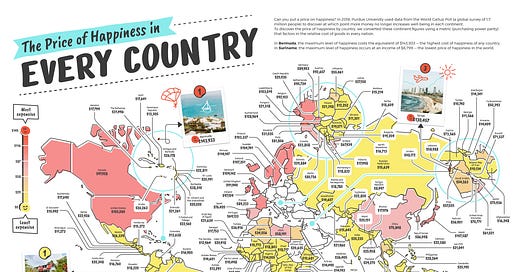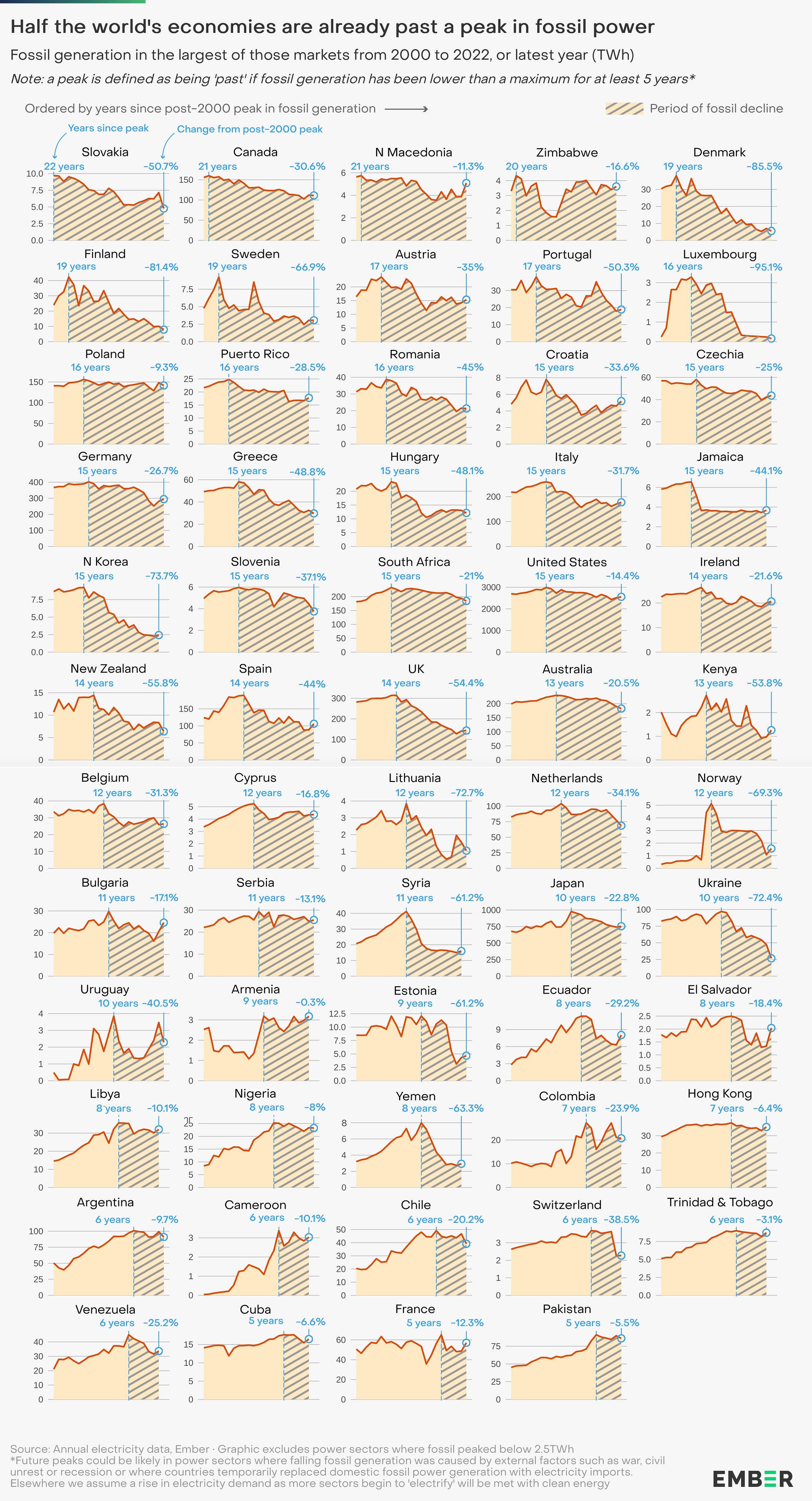Price of Happiness and more...
[Issue #26] In our this week's issue, we will look at the price of happiness in every country, learn about the world's top subway system and see which economies are past their peak in fossil power! ⬇️
Welcome to Insight Scoop, if you've been forwarded this post, I invite you to subscribe.
The Price of Happiness in Every Country
Source: Expensivity.com
Insights
This visual explores the idea that happiness has a "price tag," represented by the annual income needed to achieve life satisfaction in different countries. It uses the "satiation point" concept, where additional income no longer significantly increases happiness. Key findings include:
Bermuda ranks as the most expensive place to be happy, requiring an annual income of $143,933 due to its high cost of living.
Suriname has the cheapest happiness price tag globally, at only $6,799 per year.
The US ranks second-highest in North America, with a happiness cost of $125,101.
South America boasts the most affordable happiness, with Suriname and Argentina leading the pack.
Europe features seven countries with a six-figure happiness premium.
The Middle East & Central Asia sees Israel with the highest cost, nearly double Qatar's second-highest price.
The World’s Best Subway System
Source: Essential Living
Insights
Seoul tops both the overall ranking and accessibility ranking.
Madrid has significantly lower ridership but is highly accessible.
Paris has low accessibility despite being a major city.
Overall Ranking:
Top 5: Seoul Subway (South Korea), Shanghai Metro (China), Tokyo Metro (Japan), Mexico City Metro, London Underground
Lowest 3: Paris Metro, Beijing Subway, Moscow Metro
Ridership:
Most passengers: Beijing Subway (38 billion passengers/year)
Least passengers: Madrid Metro (657 million passengers/year)
Accessibility:
Most accessible: Seoul Subway
Least accessible: Paris Metro
World Economies Past their Fossil Peak
Source: Ember Climate
Insights
Half of the world has passed peak fossil power: EU, Oceania, and North America have seen significant declines (30%, 20%, and 15% respectively).
Emerging regions show mixed progress: Africa and Latin America have plateaued, while Chile and Nigeria have witnessed reductions despite rising demand.
Only Middle East and Asia haven't peaked: However, even China (largest consumer) pledges coal decline from 2026.
… and that’s our Insight Scoop for this week!
Enjoy the newsletter? Please forward to a pal. It only takes 18 seconds. Making this one took 6 hours.
New around here? Join the newsletter — it's free!








